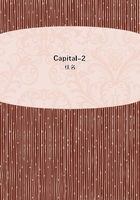
第42章
THE METAMORPHOSES OF CAPITAL AND THEIR CIRCUITSTHE THREE FORMULAS OF THE CIRCUITThe three formulas may be set down in the following manner, using Tc for "total circulation process":
I. M---C ... P ... C'---M'
II. P ... Tc ... P
III. Tc ... P (C')
If we combine all three forms, all premises of the process appear as its result, as a premise produced by it itself. Every element appears as a point of departure, of transit, and of return. The total process presents itself as the unity of the processes of production and circulation. The process of production becomes the mediator of the process of circulation and vice versa.
All three circuits have the following in common: The self-expansion of value s the determining purpose, as the compelling motive. In I this is expressed in its form. Formula II begins with P, the very process of creating surplus-value. In III the circuit begins with the self-expanded value, even if the movement is repeated on the same scale.
As C---M means M---C for the buyer, and M---C means C---M for the seller, the circulation of capital presents only the ordinary metamorphosis of commodities, and the laws evolved with regard to it (Buch I, Kap. III, 2) [English edition: Ch. III, 2. -- Ed. ] on the mass of money in circulation are valid here. However, if we do not cling to this formal aspect but rather consider the actual connection between the metamorphoses of the various individual capitals, in other words, if we study the connection between the circuits of individual capitals as partial movements of the process of reproduction of the total social capital, then the mere change of form of money and commodities cannot explain the connection.
In a constantly revolving circle every point is simultaneously a point of departure and a point of return. If we interrupt the rotation, not every point of departure is a point of return. Thus we have seen that not only does every individual circuit presuppose ( implicite ) the others, but also that the repetition of the circuit in one form comprises the performance of the circuit in the other forms. The entire difference thus appears to be a merely formal one, or as a merely subjective distinction existing solely for the observer.
Since every one of these circuits is considered a special form of this movement in which various individual industrial capitals are engaged, this difference exists only as an individual one. But in reality every individual industrial capital is present simultaneously in all three circuits.
These three circuits, the forms of reproduction assumed by the three forms of capital, are made continuously side by side. For instance, one part of the capital-value, which now performs the function of commodity-capital, is transformed into money-capital, but at the same time another part leaves the process of production and enters the circulation as a new commodity-capital.
The circuit form C' ... C' is thus continuously described; and so are the other two forms. The reproduction of capital in each one of its forms and stages is just as continuous as the metamorphosis of these forms and the successive passage through the three stages. The entire circuit is thus a unity of its three forms.
We assumed in our analysis that capital-value in its entire magnitude acts as money-capital, productive-capital or commodity-capital. For instance, we had those £422 first entirely as money-capital, then we transformed them wholly into productive capital, and finally into commodity-capital, into yarn of the value of £500 (containing £78 worth of surplus-value).
Here the various stages are just so many interruptions. So long as, e.g., those £422 retain their money-form, that is to say, until the purchases M---C (L plus MP) are made, the entire capital exists and functions only as money-capital. As soon as it is transformed into productive capital, it performs neither the function of money-capital nor of commodity-capital.
Its entire process of circulation is interrupted, as soon as it functions in one of its two circulation stages, either as M or as C'. Consequently, the circuit P ... P would represent not only a periodical renewal of the productive capital but also the interruption of its function, the process of production, up to the time when the process of circulation is completed.
Instead of proceeding continuously, production would take place in jerks and would be renewed only in periods of accidental duration, according to whether the two stages of the process of circulation are got through with quickly or slowly. This would apply for instance to a Chinese artisan who works only for private customers and whose process of production ceases until he receives a new order.
This is indeed true of every single part of capital that is in motion, and all parts of capital go through this motion in succession.
Suppose that the 10,000 lbs. of yarn are the weekly product of some spinner.
These 10,000 lbs. of yarn leave the sphere of production entirely and enter the sphere of circulation; the capital-value contained in it must all be converted into money-capital, and so long as this value continues in the form of money-capital it cannot enter anew into the process of production.
It must first go into circulation and be reconverted into the elements of productive capital, L plus MP. The circuit-describing process of capital means constant interruption, the leaving of one stage and the entering into the next, the discarding of one form and the assuming of another.
Each one of these stages not only presupposes the next but also excludes it.
But continuity is the characteristic mark of capitalist production, necessitated y its technical basis, although not always absolutely attainable.